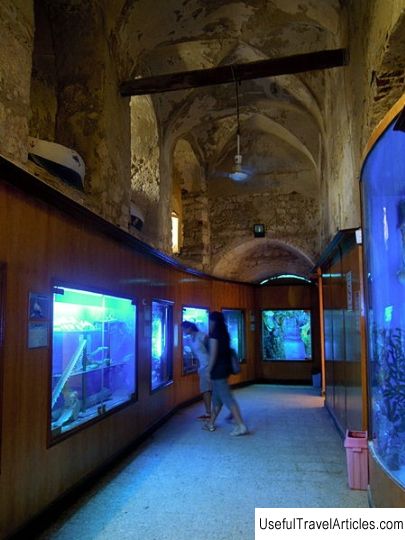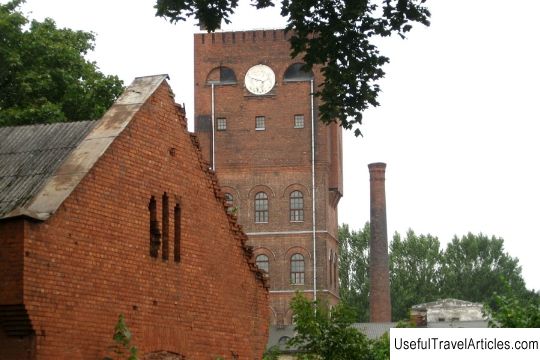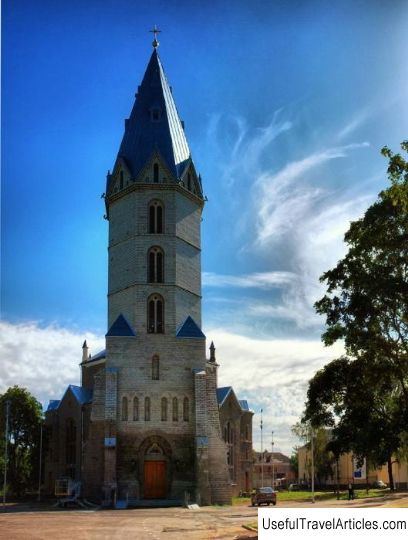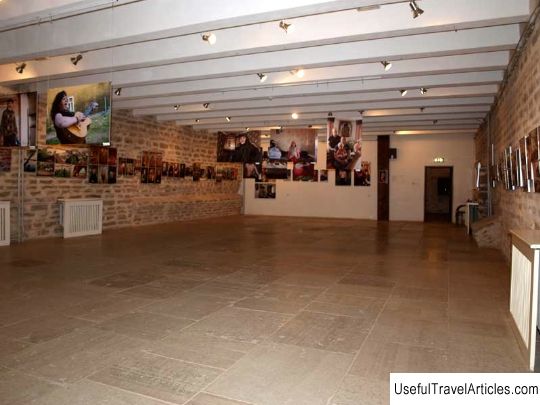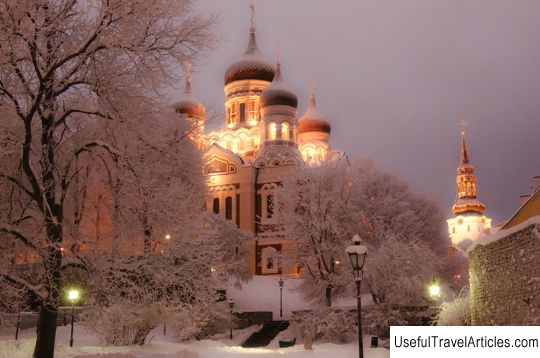Resurrection Cathedral (Oigeusu ulestousmise peakirik) description and photos - Estonia: Narva
Rating: 8,0/10 (1458 votes) 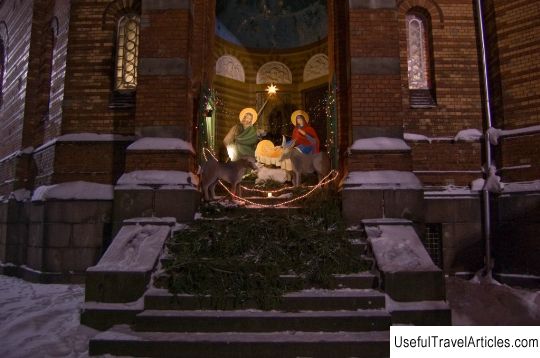
Resurrection Cathedral (Oigeusu ulestousmise peakirik) description and photo - Estonia: Narva. Detailed information about the attraction. Description, photographs and a map showing the nearest significant objects. The name in English is Oigeusu ulestousmise peakirik. Photo and descriptionThe mention of the construction of the Orthodox cathedral dates back to 1873. Even then, a proposal was put forward to build a temple near Narva for the workers of the Krenholm manufactory, since about half of the 10 thousand workers at the factory were Orthodox. The construction of the temple was postponed "until funds were sought." In September 1889, the new Estonian governor, Prince. Sergey Vladimirovich Shakhovsky sent a letter to the manager of the Krengolm Manufactory Yu.A. Andre, in which he, in a soft, but at the same time and persistent form, proposed to build a church for the Orthodox workers of the factory. As a result, on August 5, 1890, the foundation stone of the temple was completed, which was timed to coincide with the visit of Narva by Emperor Alexander III, who held an official meeting here with the German Emperor Wilhelm II. On this day, Alexander III, after the liturgy in the main temple of Narva - the Transfiguration Cathedral, personally laid the first stone of the future cathedral, hitting it three times with a hammer. The place of the bookmark was illuminated, after which the emperor got acquainted with the plan for the construction of the temple. In November 1786, after the consecration of the main altar and the entire church, the first liturgy was held in the constructed cathedral, which was conducted by Archbishop Arseny of Riga and Mitava The project of the Resurrection Church was prepared by the Krengolm architect Pavel Vasilyevich Alish. This church was radically different from the sacred buildings already built in Narva. Apparently, the cathedral was not accidentally built next to the railway, since at that time the view from the carriage window, from an aesthetic point of view, was as important as the view from the river or the regular road. In addition, during the construction, the emphasis was placed on the fact that the temple was viewed as an integral structure from the foundation to the cross, as opposed to the temple of medieval Narva, in which the religious idea was emphasized only by its upper part or spire. The Resurrection Cathedral was built in Byzantine style, the purpose of which was to emphasize the spiritual continuity between Constantinople and Moscow. This style came to Russian architecture in the 30s of the 19th century to replace classicism. The heavy, squat volume of the Resurrection Cathedral was crowned with the same monumental domes. The building itself is built of light and dark facing bricks, the layers of which alternate with each other. If you look at the plan of the cathedral, you can trace the outlines of the cross. The peculiarity of the temple is 4 portals, which house mosaic images: St. Alexander Nevsky, the unmercenaries of Cosma and Damian, the Mother of God Joy of All Who Sorrow and Nicholas the Wonderworker. According to the original plan, these portals played the role of additional entrances to the temple, however, later, for security purposes, they were laid. There are three large and 3 small bells on the belfry. On the main bell, which weighs just over 2000 kg, the Savior is depicted, on the middle one - the Mother of God, on the small one - Nicholas the Wonderworker. The inscriptions on them indicate that they were cast at the Gatchina plant for the Krenholm manufactory. There is a basement under the temple where cinders, oils, etc. are kept. Initially, the basement was not intended for the lower church. However, as a result of the upper temple being cold, they decided to convert the basement into a winter church. Now in the lower church in the name of St. Seraphim of Sarov, there is also the office, prosphora, carpentry and icon painting workshops. The upper and lower temples are interconnected by a spiral staircase located in the altar part. The height of the temple is 40.5 meters, the length of the temple is almost 35 m, and the width is 28.4 m. The height of the belfry is almost 30 meters. The inner base of the Resurrection Cathedral, like many years ago, it forms a three-tiered iconostasis, which is framed by an arch. In order to emphasize the solidity and volume of the iconostasis, the craftsmen used the so-called rigid carving with clear and even edges. Oak was used as the base material, while the applied carving was made of linden. A feature of the iconostasis was the fact that different gilding was used - matte and shiny. The great value of the iconostasis lies in the fact that for 100 years it has practically not been updated, therefore today it is an artistic example of the principles of gilding and carving of the late 19th century. Of the murals, the most preserved image in the central dome: "Lord Pantokrator" is the most monumental image of the interior decoration. The Resurrection Cathedral is the only surviving temple in the entire district. Therefore, it is not surprising that all church utensils were collected here. An interesting story is the history of the large Crucifixion, which used to be located in the central part of the Transfiguration Cathedral. After the bombing during World War II, it miraculously survived, while only the ruins of the temple remained. Soon after the incident, the Crucifixion was transported to the Resurrection Cathedral.              We also recommend reading Holy Dormition Monastery in Zhirovichi description and photos - Belarus: Slonim Topic: Resurrection Cathedral (Oigeusu ulestousmise peakirik) description and photos - Estonia: Narva. |
